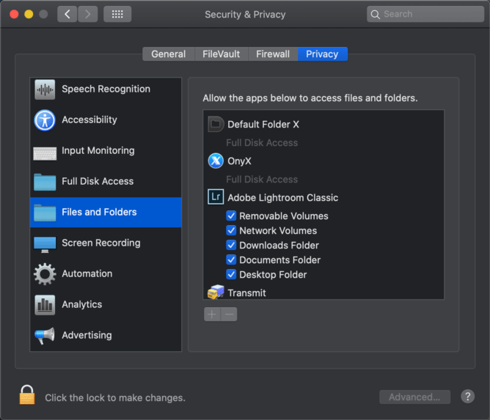

- HOW DO I REGISTER DEFAULT FOLDER X ARCHIVE
- HOW DO I REGISTER DEFAULT FOLDER X SOFTWARE
- HOW DO I REGISTER DEFAULT FOLDER X WINDOWS
This is because Group Policy tools will use only the ADMX files from the Central Store once a Central Store has been created). These policies are stored in the following location:Ĭomputer Configuration -> Policies -> Administrative Templates: Policy Definitions (ADMX files) retrieved from the central store:Īvailable policies are grouped in categories for each application template. (Note that any ADMX files stored locally on an administrative machine will be ignored. The Group Policy Management Editor dialog box will open and read all the ADMX files located in the Central Store. Expand the Group Policy Objects node, then right-click the new GPO and click Edit:ĥ. Create a new PDF-XChange Editor GPO for editing purposes. Right-click the Group Policy Objects node and select New. The New GPO dialog box will open. Type a name for the GPO:Ĥ. This can be done on either the Domain Controller itself or a management machine.Ģ. Open the Group Policy management console on the associated Domain Controller. The next step is to create a new policy that will manage the settings for PDF-XChange Editor:ġ. Use the Administrative Templates in a Policy The process of creating a new policy is detailed below. The templates can now be used to create/modify Group Policy objects, as they are located in the Central Store. Note that the subfolder “EN-US” has been created in order to store the US English-specific language files. The default location is:Ĭ:\Windows\SYSVOL\domain\Policies\PolicyDefinitions\ PDFXEditor.adml must be copied to the Central Store. PDFXEditor.admx must be copied to the Central Store on the domain controller. The default location is:Ĭ:\Windows\SYSVOL\domain\Policies\PolicyDefinitions (as detailed below). Copy them to the following locations of the domain controller: The first step is to make the ADMX/ADML files available for use. Populate the Central Store with the ADMX Files Manage Group Policy Settings for PDF-XChange Editor and Enable/Disable the Policy. Use the Administrative Templates in a Policy.ģ. Populate the Central Store with the ADMX Files.Ģ. Using an ADMX File to Determine a Domain-Based Group Policyġ.
HOW DO I REGISTER DEFAULT FOLDER X WINDOWS
A Windows Vista (or later) operating system for the administrative workstation.

The following prerequisites are the minimum required in order to admin ister domain-based GPOs with Tracker Software's administrative template:

The remainder of this article will detail the use of an ADMX file to determine a domain-based Group Policy.
HOW DO I REGISTER DEFAULT FOLDER X ARCHIVE
Links to our ADMX and ADML files are provided below.įurther information on the management of Group Policy ADMX files is available here.Ĭlick the links below to download the ADMX/ADML files for our products. Note that these files can be used to manage either local Group Policies or dolman-based Group Policies:Ī zip archive of all current template files can be found here: The ADMX files that we provide are language-neutral and can be used to determine registry-based policy settings of specific features of our software. Additionally, we have also made the ADML files for language-specific settings available. These templates were created in order to assist system administrators in deploying the software, and also to improve the user experience.
HOW DO I REGISTER DEFAULT FOLDER X SOFTWARE
Tracker Software Products has created Active Directory Administrative Templates for PDF-XChange Editor, PDF-Tools and the Tracker Updater (which is used to auto-update all of our products). Using ADMX and ADML Files with Group Policies


 0 kommentar(er)
0 kommentar(er)
